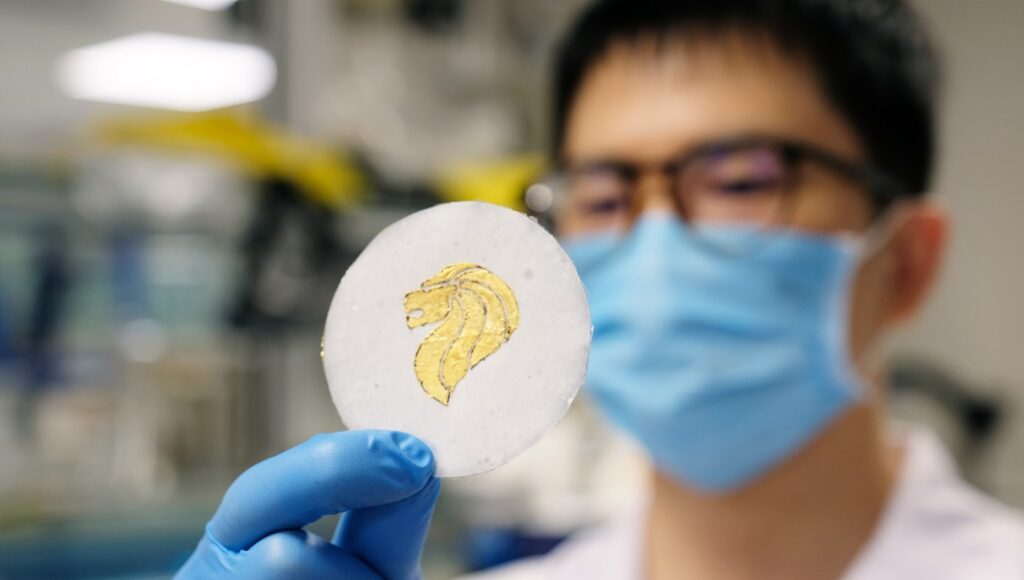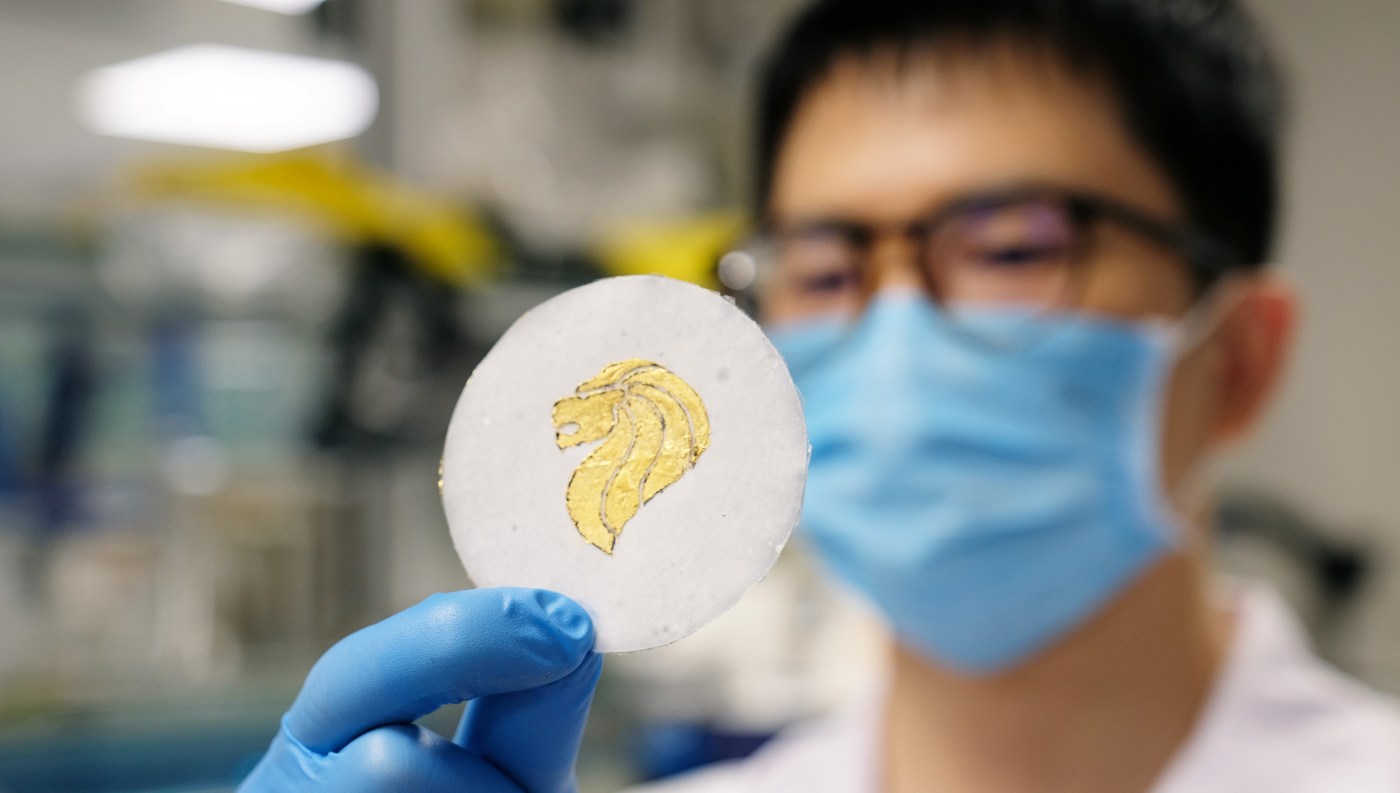
Scientists have created biodegradable batteries that can be buried in soil after use.
The paper-thin biodegradable zinc batteries could one day become an environmentally sustainable option for powering smartphones and flexible wearable electronic devices.
The NTU Singapore-developed zinc batteries are made up of electrodes (through which the electrical current leaves or enters the battery) screen-printed on to both sides of a piece of cellulose paper that has been reinforced with hydrogel.
Once the battery has been expended, it can be buried in soil, where it breaks down completely within a month.
In a proof-of-concept experiment, the NTU team demonstrated how a 4cm x 4cm square of printed paper battery could power a small electric fan for at least 45 minutes. Bending or twisting the battery did not interrupt the power supply.
RELATED: New Solution to Ridding Oceans of Microplastics Uses Acoustic Waves
In another experiment using a 4cm x 4cm battery to power an LED, the scientists showed that despite cutting away parts of the paper battery, the LED remained lit, indicating that cutting does not affect the functionality of the battery.
The scientists think their printed battery could be integrated into flexible electronics such as foldable smart phones that are already on the market, or biomedical sensors for health monitoring.
MORE: This ‘Floating Continent’ Could Collect and Recycle Plastic from the Ocean in Future
Professor Fan Hongjin from the NTU School of Physical and Mathematical Sciences and the study’s co-lead author, said, “Traditional batteries come in a variety of models and sizes, and choosing the right type for your device could be a cumbersome process. Through our study, we showed a simpler, cheaper way of manufacturing batteries, by developing a single large piece of battery that can be cut to desired shapes and sizes without loss of efficiency. These features make our paper batteries ideal for integration in the sorts of flexible electronics that are gradually being developed.”
Assistant Professor Lee Seok Woo from the NTU School of Electrical and Electronic Engineering and the study’s co-lead author, said of the research, published in Advanced Science, “We believe the paper battery we have developed could potentially help with the electronic waste problem, given that our printed paper battery is non-toxic and does not require aluminium or plastic casings to encapsulate the battery components.”
“Avoiding the packaging layers also enables our battery to store a higher amount of energy, and thus power, within a smaller system.”
DON’T WASTE Great Research Findings; Share This Story…




















